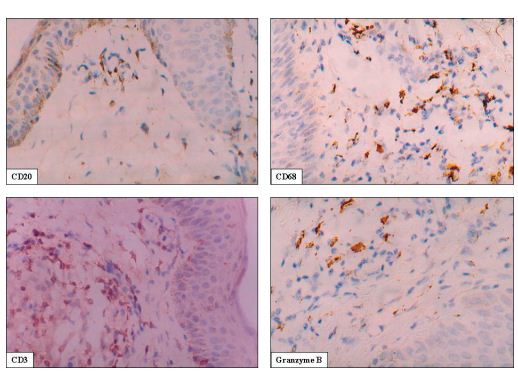
| Journal name |
Eur J Dermatol. |
| Publication year |
2008 |
| Auther |
Mahmoud R. Hussein, Eman M. Salah |
Background: The the epitheliod cell granuloma is the hallmark of tuberculoid leprosy (TL). In this investigation, we tried to charactrize the cell population in these granulomas
Materials and Methods:Granuloma cell population was immunohistologically examined in 30 cases of untreated TL and five additional control cases with normal skin (immunoperoxidase staining methods) using antibodies targeting antigens for B cells (CD20+), T cells (CD3+), histiocytes (CD68+) and cytotoxic T cells (Granzyme B, GRB+)
Results: As compared to the adjacent normal skin, the mean counts of inflammatory cells in the granuloma were 3.0±1.1 vs. 54.0±2.2; 4.0±1.0 vs. 41.1±2.5; 0.6±0.4 vs. 10.9±3.3; 0.0±0.0 vs. 4.3±0.40; 0.0±0.0 vs. 0.8±0.01, and 0.0±0.0 vs. 0.6±0.01 for T cells, histioicytes, T cells with cytotoxic activity, B cells, eosinophils and plasma cells, respectively
Conclusions:The heterogeneity of cell population in the granulomas of TL suggests the involvement of different immune mechanisms in their development. The numerical dominance of T cells suggest critical role for these cells in the development of these lesions. Our study was the first to report phenotypic profile of the epithelioid cell granuloma in TL